Seeing Brussels in 3 days is doable and will be an exciting experience. Here’s my Brussels itinerary for first time visitors to make the most out of your stay. I invite you to follow along and explore this wonderful city with me. Brussels is often overlooked when planning a city break. Sure, it may not have as many famous landmarks for which e.g. London or Rome are known for. Its charm comes from various experiences, which I’ll share with you in this Brussels solo travel guide.
My “Brussels in 3 days” guide for first time visitors includes a detailed day-to-day itinerary filled with activities for solo travellers. I’ll also tell you which activities I feel you could skip and share further insights into navigating around Belgium.
Table of Contents
What is Brussels known for?
Our perception of Brussels may vary culturally, but to me, Brussels is known for:
- Atomium & Manneken Pis
- The capital of the EU
- Flower carpet in August
Not much. How about you? What’s the first thing that springs to mind when you think of Brussels?
Brussels is a lifestyle city, and you need to explore the areas that pique your interest the most. To me, this means coffee culture, architecture, and history. Brussels delivers on that front and can keep you busy for many days. Costs and prices listed in this Brussels 3 Day Itinerary are correct as of June 2023.
Brussels Itinerary Day 1: City Centre Highlights
You can’t come to Brussels without seeing the city centre. Don’t be shocked by the slightly neglected and dirty corners of the central area, just look ahead, and admire the historic houses. Start at the UNESCO-certified Grote Markt (Grand Place). I have yet to meet a visitor who wasn’t deeply impressed by the sheer grandeur of this square. No matter how often you come here, the Grand Place will excite you again and again.
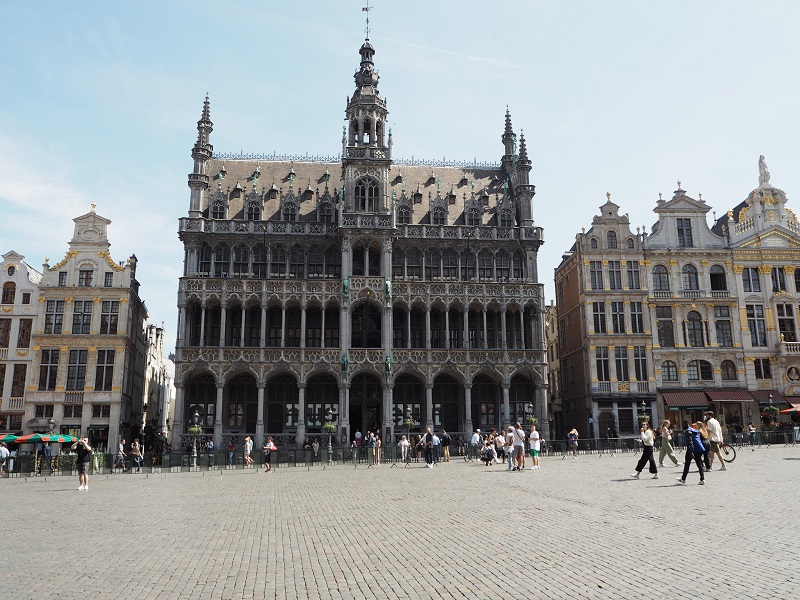
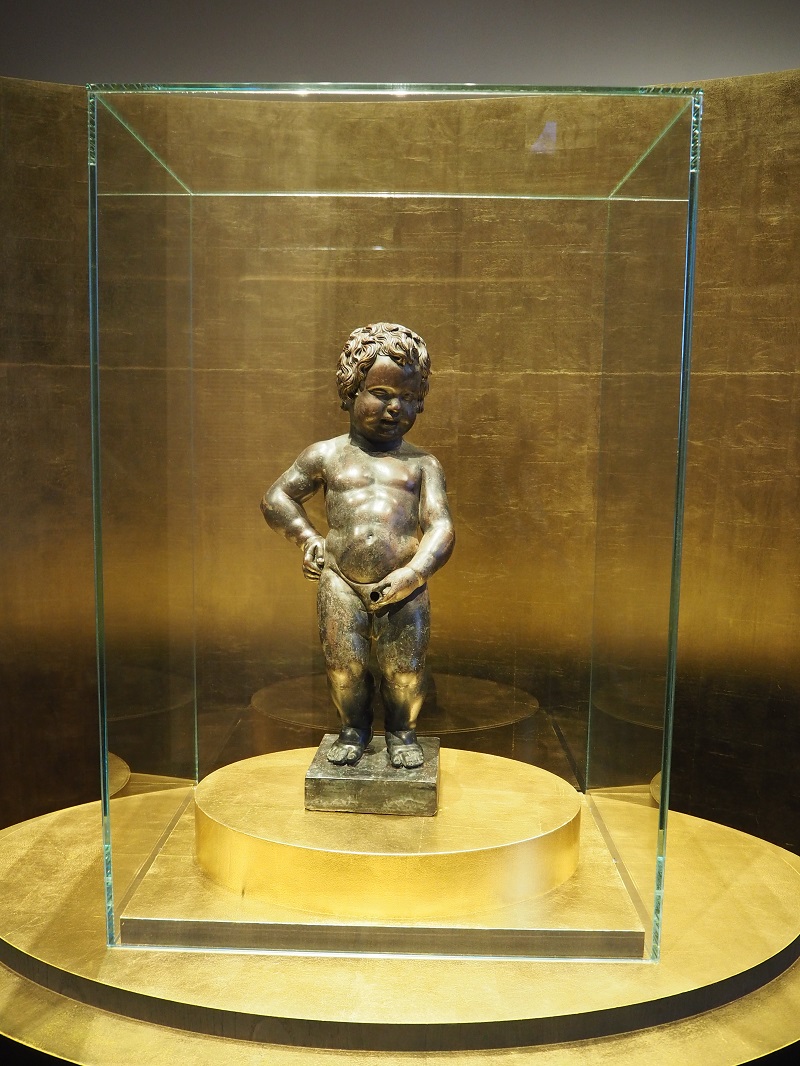
Find out more about its history and the surrounding buildings at the City Museum, which is also in the square. The top floor is dedicated to the UNESCO site, its certification process, and the ongoing preservation efforts. The museum also showcases the original Manneken Pis. The statue from the 15th century was often vandalised, decapitated, and kidnapped, hence why it was in the best interest to keep this beloved citizen in a safer environment.
Good to Know: the City Museum, as well as Sewer, Manneken Pis wardrobe and Fashion Museum have a free admission on every first Sunday of the month.
Next on your list for your Brussels itinerary should be the Galeries Royales Saint Hubert. Check out the chocolate shops and experience the high-end atmosphere of this grand shopping arcade. At 210 metres long and 8 metres wide there’s enough space for flanering. Annually, six million visitors enjoy this exquisite passage, built and designed by Jean-Pierre Cluysenaar.
Regarded as Cluysenaar’s masterpiece, the arcade opened in June 1847, shortly after Belgium gained independence. It is Europe’s oldest shopping arcade. The building with exquisite architecture was modelled after the Parisian passageways, which impressed other major European cities, such as Leipzig and Milan. Cluysenaar’s gallery would consist of two parts to connect the districts La Monnaie with La Grand-Place. Today, only two more arcades out of the original six, are preserved in Brussels: the Galerie Bortier (1848, also designed by Cluysenaar) and the Passage du Nord (1881).
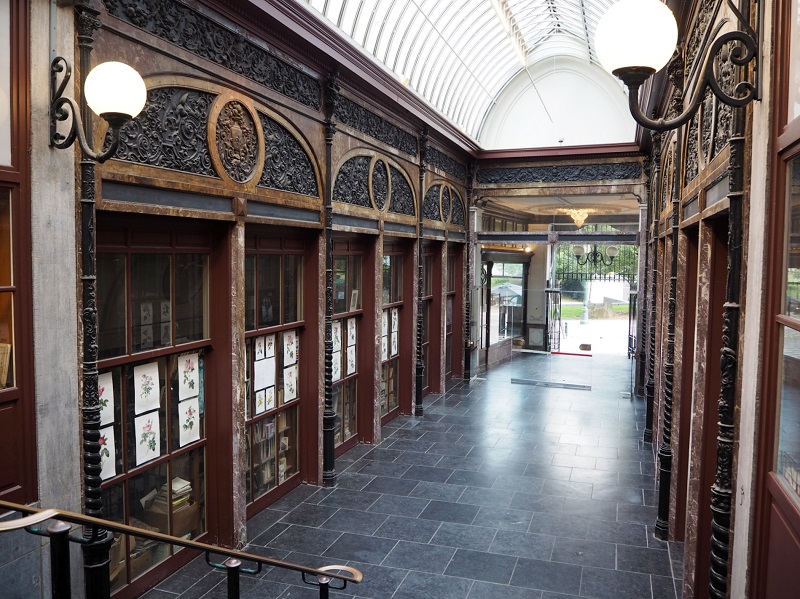
If you’re in the area, stop by the beautiful Tropismes bookstore, which is just as old and glamorous as the arcade. The exquisite interior with a high, decorated ceiling and mirrors houses over 80,000 books – mostly French literature with a focus on psychology, philosophy, sociology, and Brussels urban development. The bookstore is not crowded, and you don’t have to pay an entrance fee.
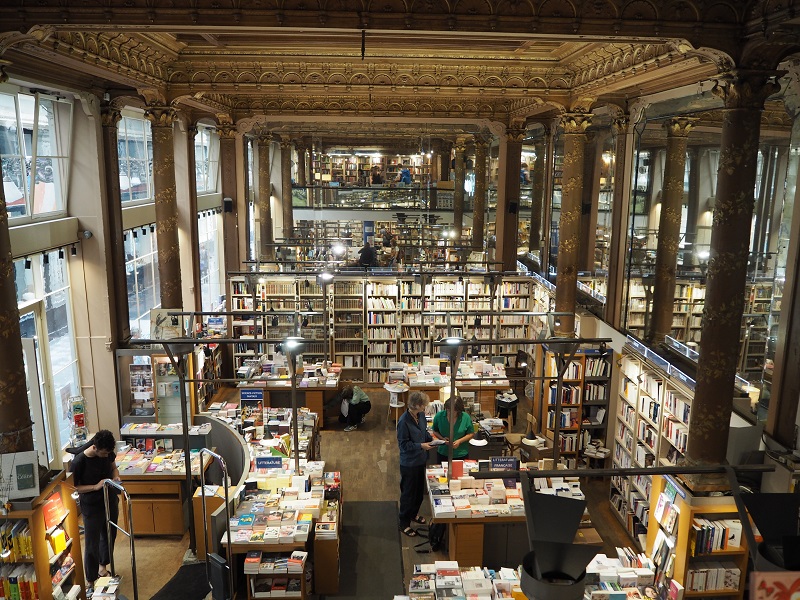
Did You Know: You’ll find a Waterstones bookstore with English publications on Boulevard Adolphe Max, near the Passage du Nord. If you’re after German publications, there is a small selection at Filigranes bookstore (EU Quarter).
6 Reasons to Visit Halles Saint-Géry (1882)
- Covent Garden style
- Cradle of Brussel’s origin
- Free (and interesting) exhibitions
- Cultural Heritage Information desk (with substantial info material on Brussels)
- Relaxed dinning & drinking atmosphere
- Public piano
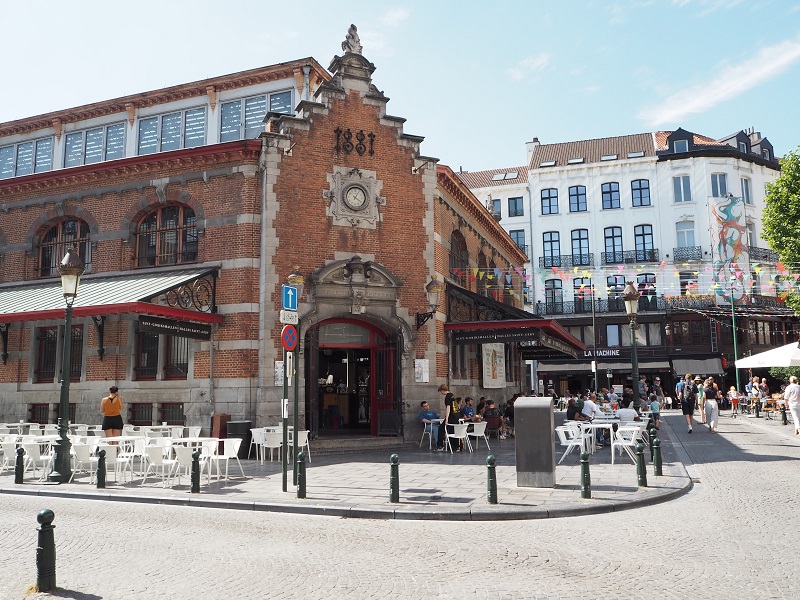
Brussels 3 Day Itinerary: Don’t Miss Out On
De Brouckere Square with the historic Metropole Hotel. This 5-star luxury complex is currently under construction, but you can sneak a peek inside through the window. The luxurious interior of this early Art Nouveau building rivals Budapest’s splendour.
Enjoy the views at the museum hill (Mont des Arts) and watch the sunset from here.
Good To Know: there are three tourist information centres in Brussels Central.
1. Visit Flanders on Rue du Marche Aux Herbes – they sell day tours to the Flanders region.
2. Visit Brussels at the Town Hall, Grand Place – mixed, some good information, but their focus is on selling tours.
3. Cultural Heritage Information at Halles Saint-Géry – they have more informative material, e.g. specific neighbourhood brochures and Brussel-specific books. I absolutely love their free “a la cart” brochures on each neighbourhood. The brochures are packed with local information, walking routes, history and food recommendations. In total there are 23 to collect. Some of them are online, but not all of them, e.g. Bruxelles A la Carte Central (in French & Dutch only).
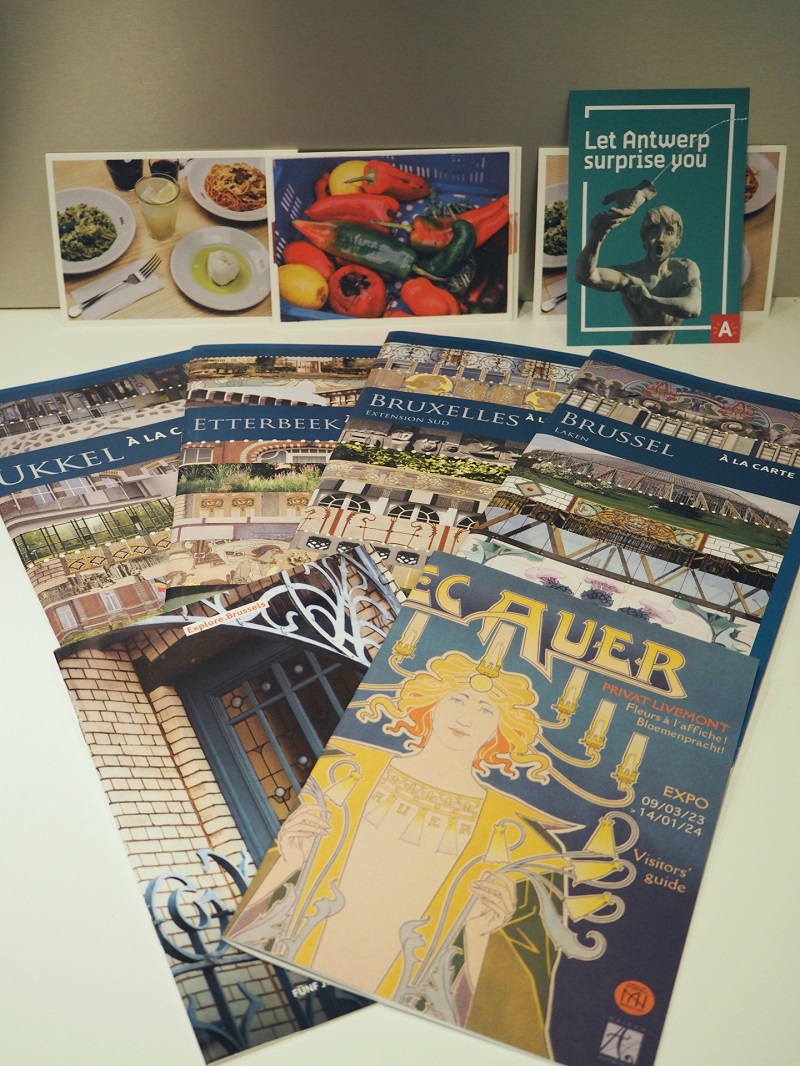
Brussels Itinerary Day 2: Art Nouveau & Local Neighbourhoods
Brussels is regarded as the “cradle of Art Nouveau”. The city was a playground for several architects and has over 1000 well-preserved buildings, including villas, hotels and cafes. The style particularly distinguishes itself by capturing the delicacy and beauty of plants and nature. The dragonfly and its fine wings often inspired Brussels architects. The style is so exquisite and characterised by none other than Victor Horta, who catapulted the city to the status of “capital of Art Nouveau”. To commemorate his work, the city currently celebrates his 100th anniversary with various openings, events and exhibitions.
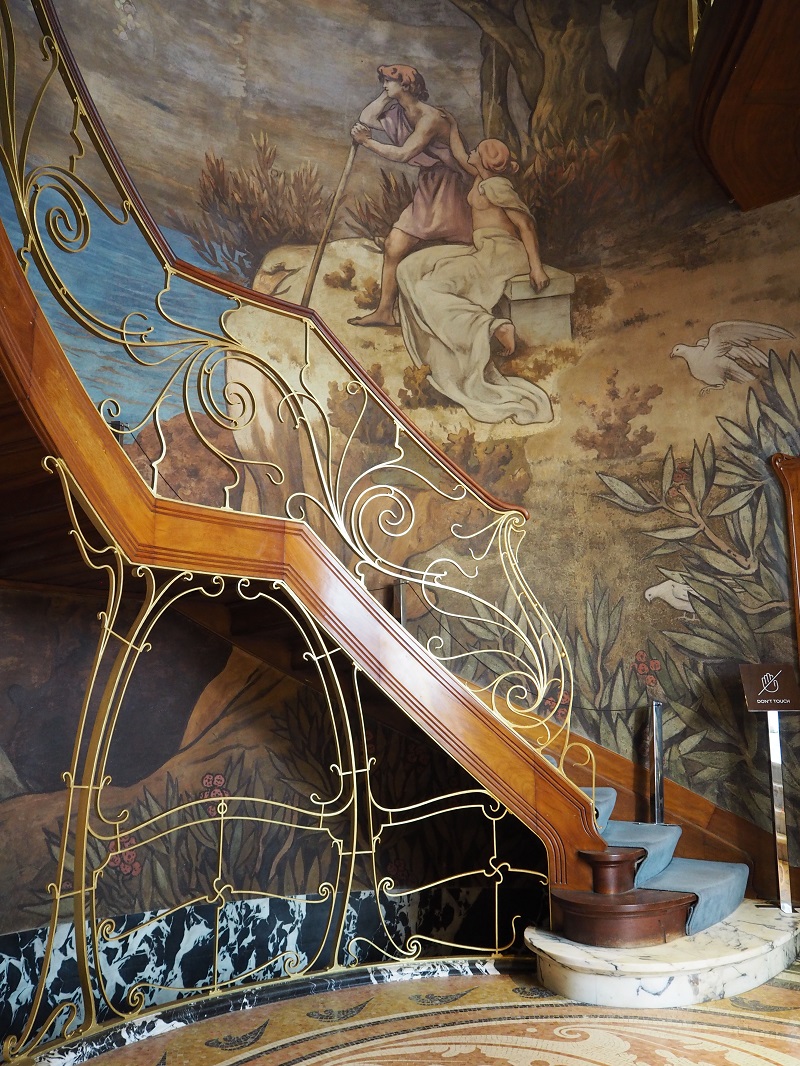
Did You Know? Some buildings are called “maison” and some “hotel”. Maisons are residential buildings, often as part of a row. Hotels are grand townhouses and, in the past, free-standing with a garden in the back.
You can take part in the celebrations with the Brussel Art Nouveau pass, which is available in two versions. Valid for 9 months, it allows you to visit some of the most exclusive maisons, usually closed to the public, as well as museums and special exhibitions. Cultural events and other guided tours of unique Art Nouveau buildings also take place throughout the year. Of course, opportunities to visit these extraordinary places are rare and require quick initiative on your end and prior booking.
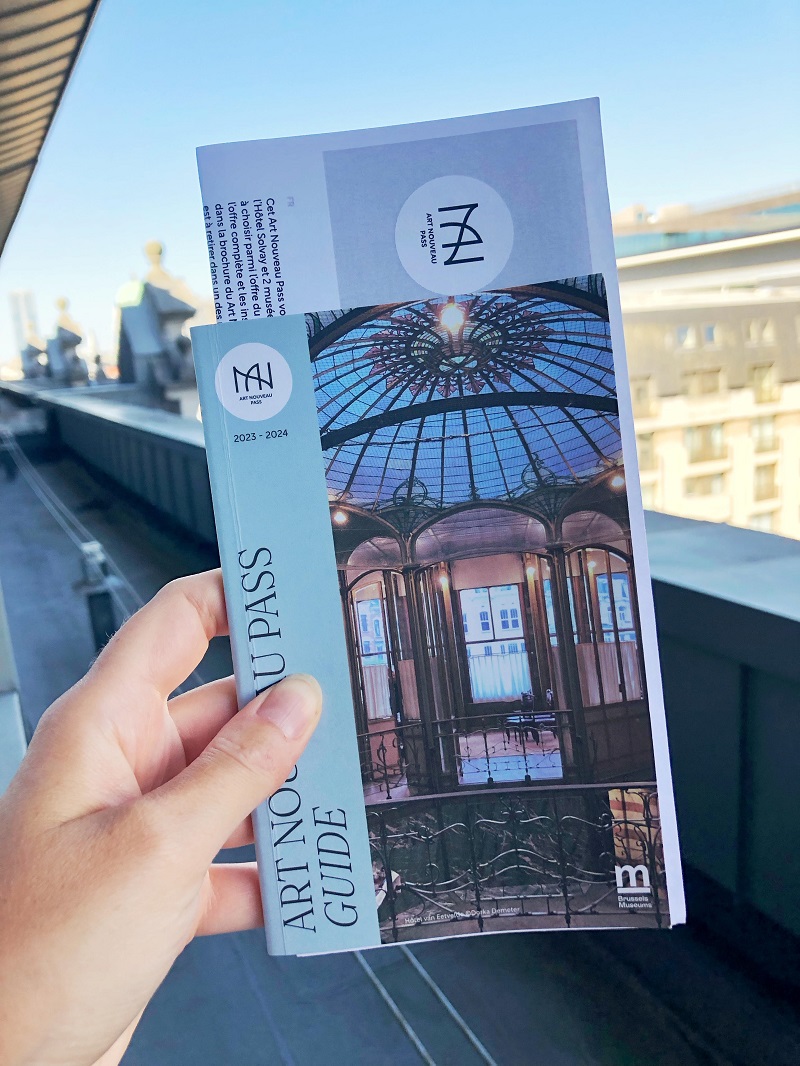
Did You Know:
Palais Stoclet is currently in the news. The Palais designed by Josef Hoffmann and decorated lavishly by Gustav Klimt is regarded a heritage gem of immense cultural significance. The city has been fighting for years to demand the access of the building to the public. You can explore the interior of Palais Stoclet in the immersive exhibition “Restitution” at the Art & History Museum (until mid-April 2024).
You can embark on a self-guided art nouveau walk yourself at any time. The neighbourhoods of Saint Gilles, Ixelles and Etterbeek in the south of Brussels, as well as Schaerbeek in the north, are the hotspots to see the buildings, their delicate facades and sgraffito decorations. Pin some of the most popular ones in your Google Maps and start exploring. There are around 1000 art nouveau buildings in town so you will eventually stumble upon some gems. You can also pick up a copy of “Brussels Art Nouveau – Walks in the City” by Cecile Dubois at the Horta Museum (25€) or The Art Nouveau Brussels guide (5€) from the Tourist Information.
Saint Gilles/Ixelles area
- Hotel Hannon
- Horta Museum
- Rue Africane 92
- Maison Rosenbaum
- Maison A Ciamberlani
- Hotel Tassle
- Hotel Solvay
- Rue du Lac 6 & Rue Belle Vue
- Hotel Max Hallet
- Hotel de Brouckere
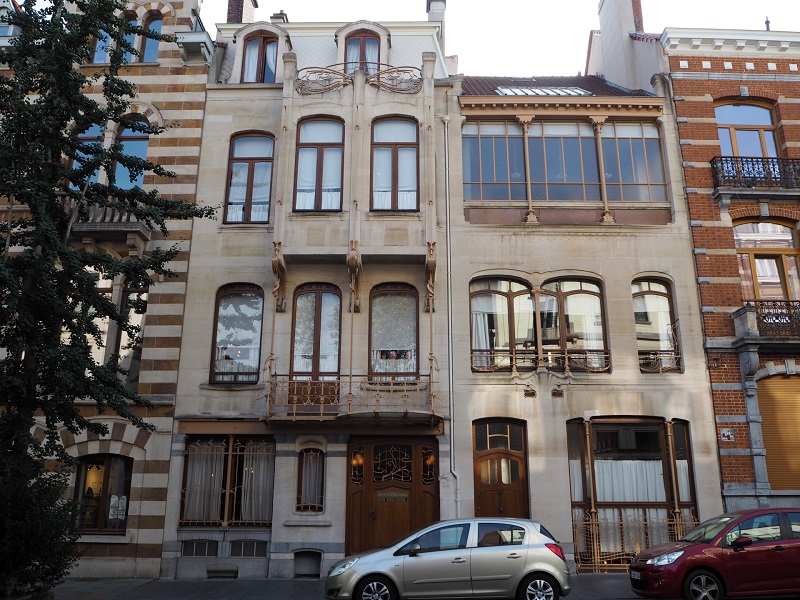
Etterbeek
- Library Solvay
- Maison Couchie
- Maison Saint-Cyr
- Hotel van Eetvelde
- Gutenberg Square 5, 19
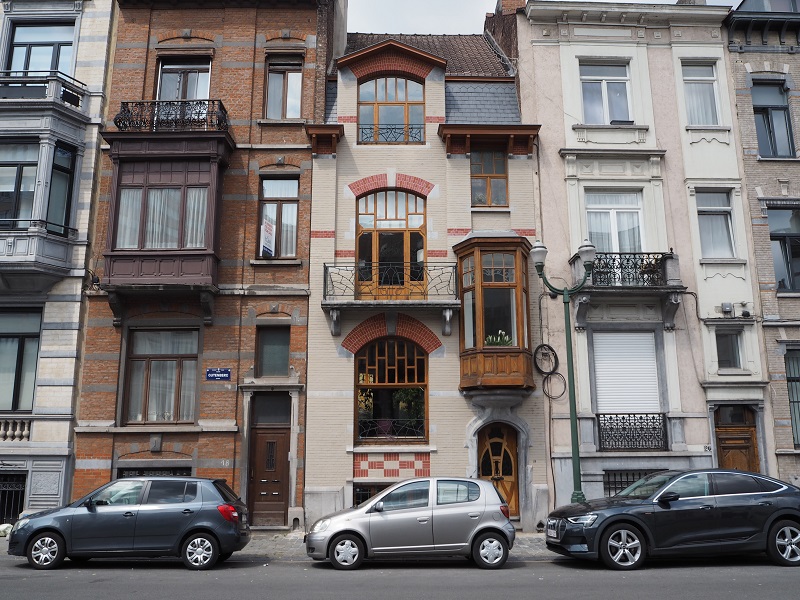
Brussel Central
- Café Falstaff
- Café Le Ciro
- Horta Brasserie & Comic Strip museum
- Tropismes bookstore
- Golden Palace Bourse (Privat-Livemont)
- Waffle Factory (Rue du Lombard)
- Parthe cinema
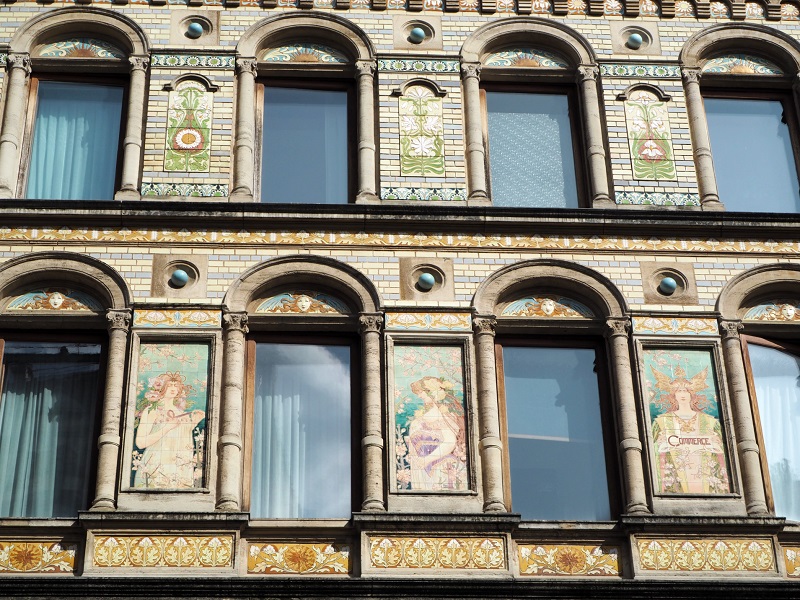
TOP TIP: some of these exquisite buildings are in private hands and generally not open to the public. There are, however, numerous opportunities throughout the year were visits are possible, e.g. Maison Saint-Cyr hosts small intimate events, the Day of the Memorial in September as well as Banad Festival in March.
Brussels 3 Day Itinerary: Don’t Miss Out On
Whilst you are in the southern area of Brussels, check out The View Ferris Wheel at Place Poelaert. Enjoy the ride, and the views and fall deeply in love with Brussels. Costs 10€.
Brussels Itinerary Day 3: Brussels North or East
I’ve come up with two options for your third day in Brussels. Explore the old Expo area in the North or head east to spend your day in the EU Quarter.
North Brussels: Expo Site
After brunch, take the tram to Heysel. Heysel station is just a short 5-minute walk from the former Expo site. You can visit Miniature Europe, the Atomium or the Design Museum. The site is extensive parkland and some of the old Expo Palaises can be seen from the outside.
Entrance to the Design Museum is included in the Atomium ticket. This 102-metre-tall landmark is synonymous with Brussels. Its 9 spheres, each 18 metres in diameter, are home to an exhibition about the Expo 1958. The space serves as an events location, museum and art centre. I really enjoyed my visit and learnt about Expo 58 as well as the construction of the Atomium. It is an interesting creation and like most Expo sites, this one has been badly neglected. It has a touch of an abandoned place, yet the city maintains a few conferences and shopping centres here to keep the area “alive”. The spheres are connected through tunnels which engage visitors with a laser show. In total, you can spend a good 90 minutes here.
Atomium, ticket prices start at 8€.
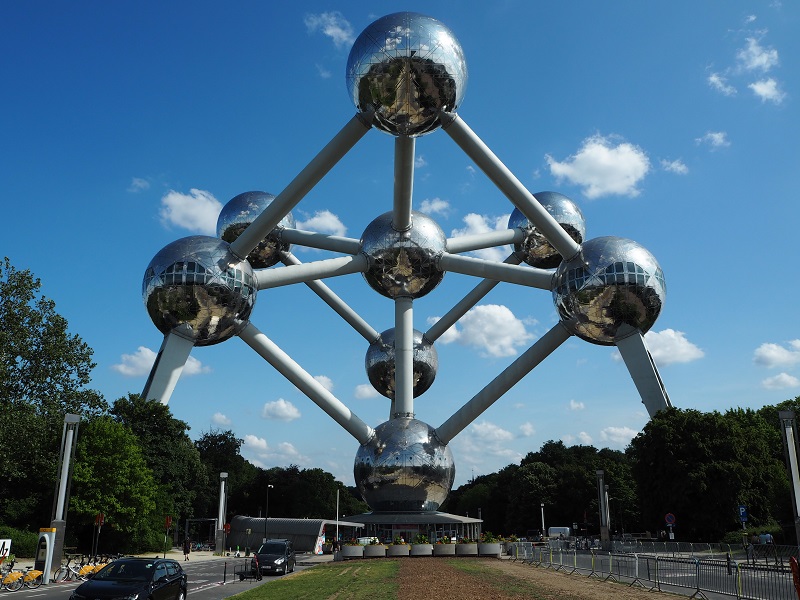
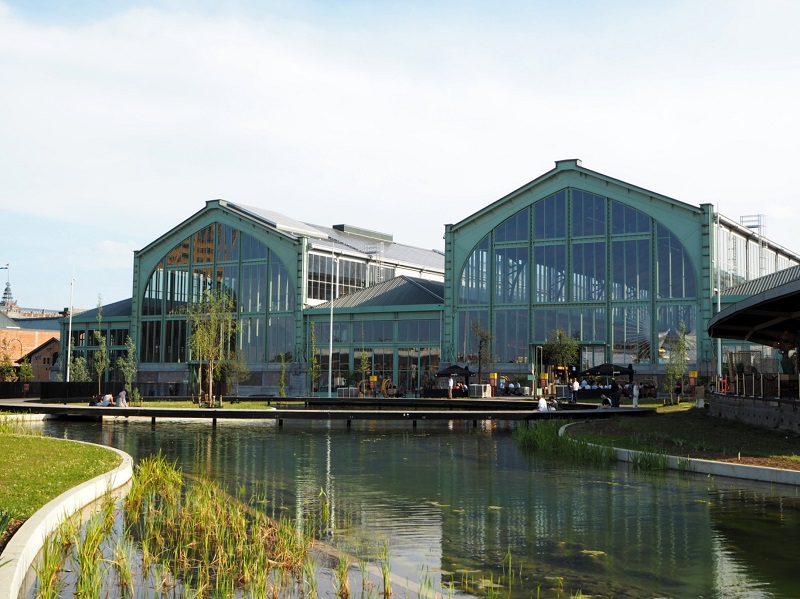
Brussels 3 Day Itinerary: Don’t Miss Out On
If you have energy left, walk back into central. The 5km walk will roughly take an hour, depending on how often you may want to stop for coffee or admire some architecture along the way. It’s also a different vibe in the summer in comparison to the winter. On the way back via Laeken (Laeken A La Carte), I ended up at the newly developed area of Tour and Taxis. This is a heavily gentrified area with brand new apartment blocks, a Museum of Illusions (WOM), a beach bar and the trendy Gare Maritime food market hall, which can also be used as an events space. Even though the sightseeing bus passes by I doubt many tourists will make the effort to come here, as it is still a bit outside of the touristic centre. This is for you if you value local vibes.
East Brussels: EU Quarter
After brunch, walk through the Parc de Bruxelles and follow Rue de la Loi until you’ve reached the EU Quarter, home to the EU Commission and EU Parliament.
Some parts of the EU Quarter are open to the public but need booking in advance (even though their official tourist brochure says otherwise). All experiences are free to visit.
House of European History – this new exhibition extends over six floors. You must first collect your multimedia guide on the top floor and then begin your exploration from the first floor. From the myth of Europa and Zeus to WWII, the Cold War and the Soviet occupation to Brexit – the exhibition focuses heavily on Germany and France. It often feels as if other parts of Europe, such as the Baltics, Finland or the Danube region, have been forgotten. Depending on your interest, this could take up to 90 minutes.
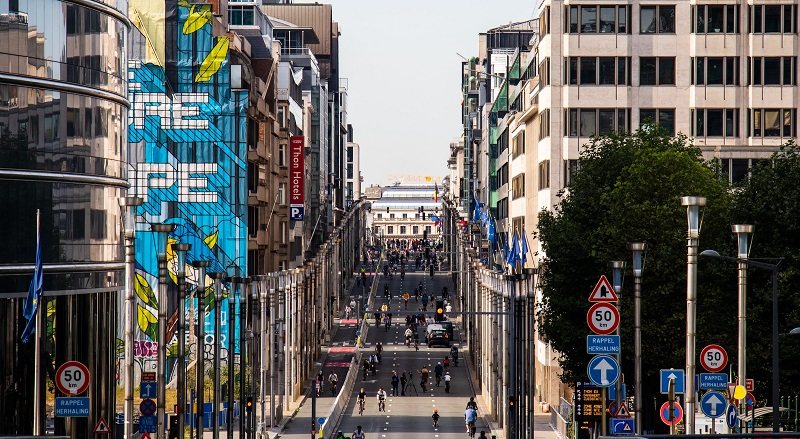
Parlamentarium – interactive exhibition on the history of the EU and its values, current developments and member states. This is a very flashy exhibition with interactive elements and many information panels. It is mainly aimed at schools and will therefore be full of study visitors. For me, the experience wasn’t really informative, and the excessive use of multimedia including IG filters and sending inspirational messages celebrating the EU spirit felt cringe-worthy and forced. Again, depending on your attention level and tolerance for multimedia exhibitions, this can take up to 90 minutes.
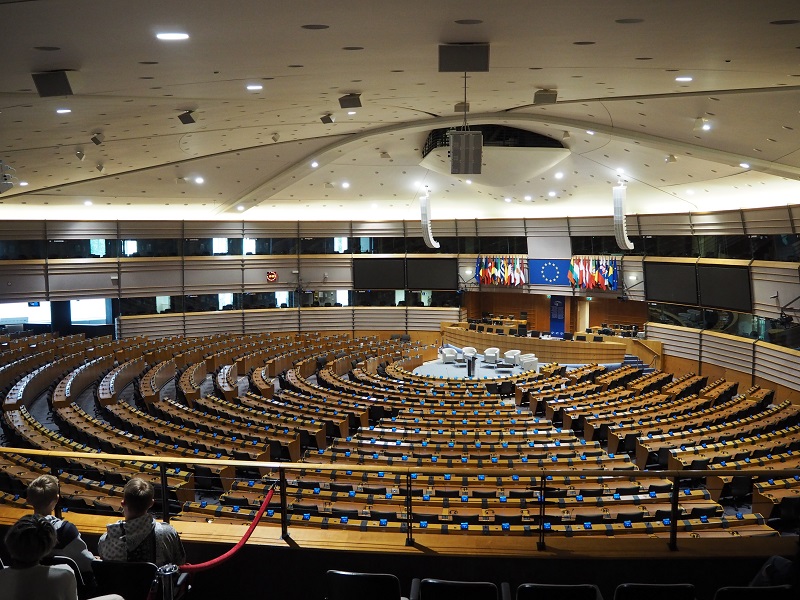
The Hemicycle – horseshoe-shaped debating chamber for EU member states including seats for delegates and translation chambers above the seating area. Register your visit to the Hemicycle in Brussels in advance and go on a self-guided tour. I was lucky during my visit and a German course was on tour, so I didn’t need the audio guide. The tour guide explained a few things about the translation profession in the EU. Up to five translators, each with five languages, can sit in one chamber. Most languages are covered within one team, if there is no speaker, e.g. Estonian, the translation team can “dial in” to another translation team, e.g. English and translate from their reporting. Most translators in the EU work freelance/consultancy but can earn up to 10k per month. Rare languages such as Finnish, Estonian, Lithuanian or Greek are preferred when applying. Depending on the security checks, a visit to the hemicycle can be completed relatively quickly and in 30 minutes. However, be warned. Many school classes will be visiting again.
Brussels Itinerary Bonus: Day Trip
Belgium is a small country and easy to explore by train. Antwerp, Bruges, and Ghent are all just a short ride away. You can also purchase tickets at short notice/on the day as the price won’t increase. The situation is different for international travel, e.g. Lille, London or Rotterdam. These train journeys need to be booked at least a month in advance to secure the best prices. Tickets can be expensive, although Lille and Rotterdam are close to Brussels. For now, let’s focus on Belgium (I’ll add more destinations in future, e.g. Leuven, Charleroi and Liège).
The top 3 things you do when you touch down in a historic Belgian town are:
- Climb the Belfry
- Embark on a canal tour
- Eat chocolate drenched waffles
Antwerp – Antwerp is my favourite as it reminds me very much of my Leipzig. Out of the three suggestions, it is also the liveliest. Antwerp is an affluent merchant city, which is clear as soon as you enter the iconic train station. Not only is the train station the benchmark for everything to come, but Antwerp has lots more to offer. It is known for its Diamond trade, but the young and dynamic city has many activities and interesting museums. The architecture has countless unique art nouveau buildings similar to those of Brussels. A self-guided walking tour requires some planning on your part before you set off. Antwerp offers cafés galore and marks the start of the Belgian Camino.
READ MORE: Quick Guide to the Antwerp Coffee Culture
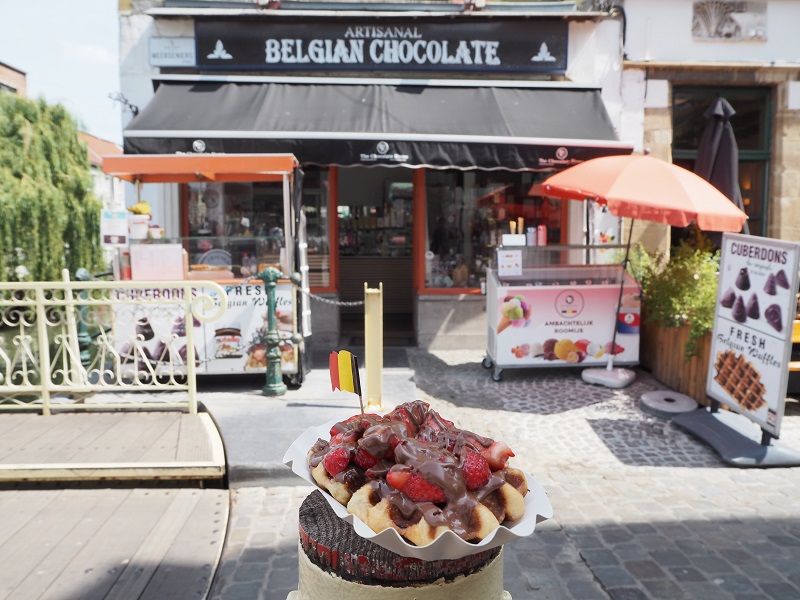
Ghent – Don’t be disheartened by a brisk 30-minute walk into the historic town centre from the train station. Countless 12/13th-century buildings await you and create a magical charm. The area around the post office is the centre of action with many restaurants, cafes, and shops. A must-do is to climb the Belfry and visit the city dragon. Don’t leave without trying the local speciality Cuberdon, a sweet, chewy treat. Single ones can be purchased e.g. from The Candy Corner (Kleine Vismarkt).
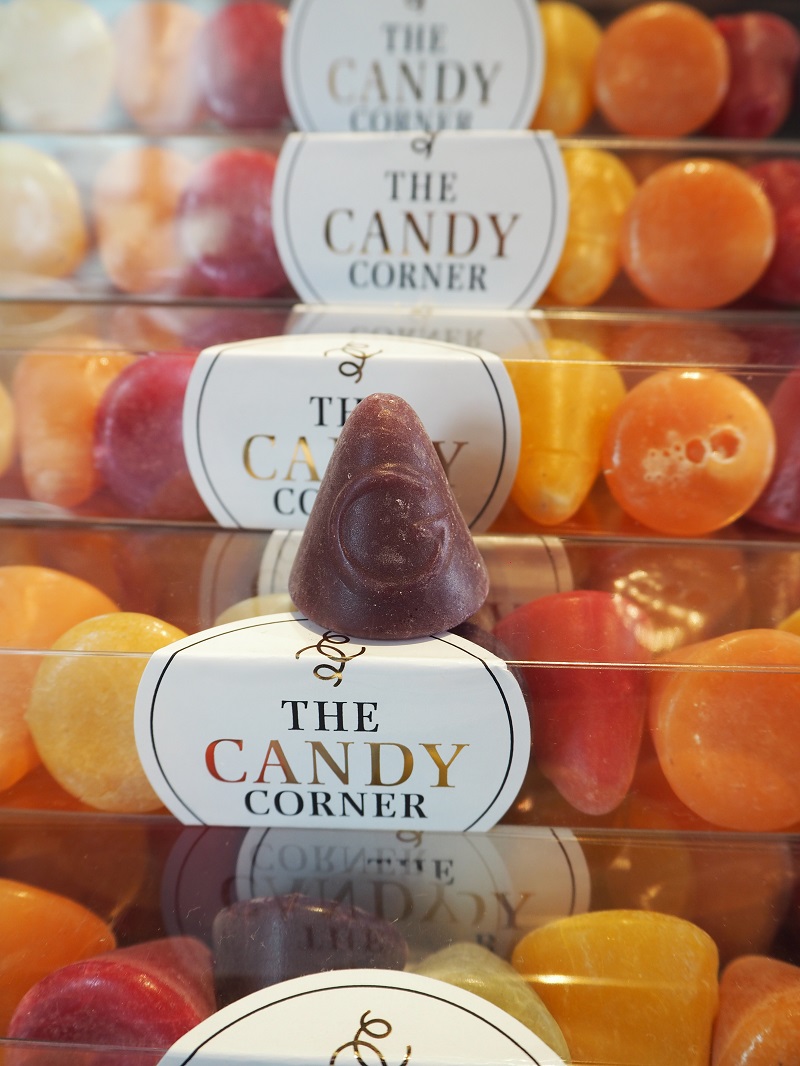
Bruges – I’ve been there twice now and would describe Bruges as a historical Disneyland version. It’s like travelling back in time. The UNESCO-certified centre has gorgeous houses, quaint squares, and local shops. It’s even more enchanting in the winter and Christmas season. The top thing to do in Bruges is to admire the medieval buildings and get lost in the mace of its cobbled streets.
Brussels Activities to Avoid
These are Brussels activities that disappointed me or didn’t engage me as much as I hoped. What doesn’t work for me might work for you, which is why I included them in this Brussels 3 Day Itinerary.
The EU Quarter didn’t engage me much. Part of the reason was the rude staff and their arrogant attitude towards visitors. The exhibitions heavily represented Germany and France and felt too dominant. You rarely learn anything about other parts of the union. I understand why some countries feel “forgotten” by the EU.
Brussels Itinerary: Coffee Culture, Camino & Leipzig Connection
Coffee Culture in Brussels: the coffee culture in Brussels is thriving and has a long history. I picked up a booklet from the Cultural Heritage desk at Saint-Géry and will study it carefully and provide a more comprehensive follow-up post once I have settled in Brussels. Then I will be able to review more places and also provide more insights. At first glance, I can tell you that Brussels has traditional European coffeehouses in Art Nouveau style. The most popular ones are Falstaff & Café Le Ciro in the centre. Coffee-wise I don’t have any complaints so far. All drinks, as well as brunch sessions, have been good here.
Of course, Brussels is expensive and coffee costs around the solid 4€ mark. Brunch sits at around 20€
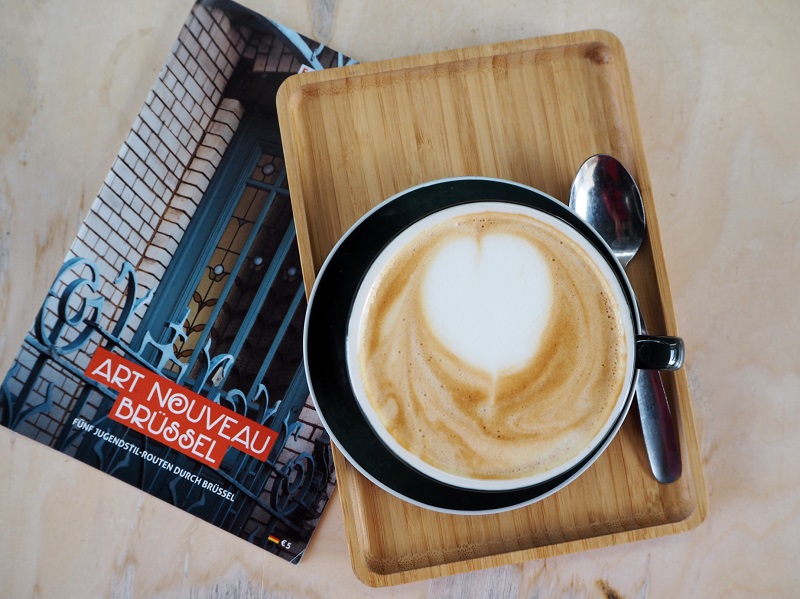
Best Cafes in Brussels: Franks, Lloyds, Hinterland, Leopolds’, Café Capitale, Ana Attento, To Meli
OK: Living Room, My Little Room, Café du Sablon, Forcado Pastelaria
Avoid: POZ, POPs, Kafei
Consider: Jackie, The Bank, Kaffabar
READ MORE: Brunch in Brussels Guide: the Best and Worst Cafés
Camino: There are 48 brass scallops in central Brussels to mark the route to Santiago. I stumbled upon my first scallop trail marker on the Grand Place (Godiva store corner Rue de la Colline). A follow-up investigation at the Tourist Information (town hall) confirmed that there is an active pilgrim community in Belgium. They have kindly printed some information about the Camino in Brussels (in French and Dutch only).
Top Tip: Bring your Credential as it will allow you free entry to the cathedrals in Belgium. Plus, people will be happy to give you a stamp.
The route starts at Place Madou and then runs through the centre of Brussels. After Brussels, it is still 2,200 km to Santiago! Pilgrims in Belgium came mainly from the north (Antwerp) and entered the city via Leuvensepoort (Madouplein). The focus of the pilgrims was to reach the Church of St. Michael and Gudula, as they also venerated other saints. Like the urban development in Santiago, the pilgrims also shaped Brussels’ city structure. There were several fountains and smaller marketplaces with halles, such as Halles Saint-Géry, to provide food and shelter for the pilgrims. Some historic hostels date back to the 14th century (Saint-Jacques d’Overmolen in the area south of Manneken Pis) and now only survive as small ruins or memorial plaques. Whilst you’re in the area, have a look at the Church of Notre-Dame de Bon Secours.
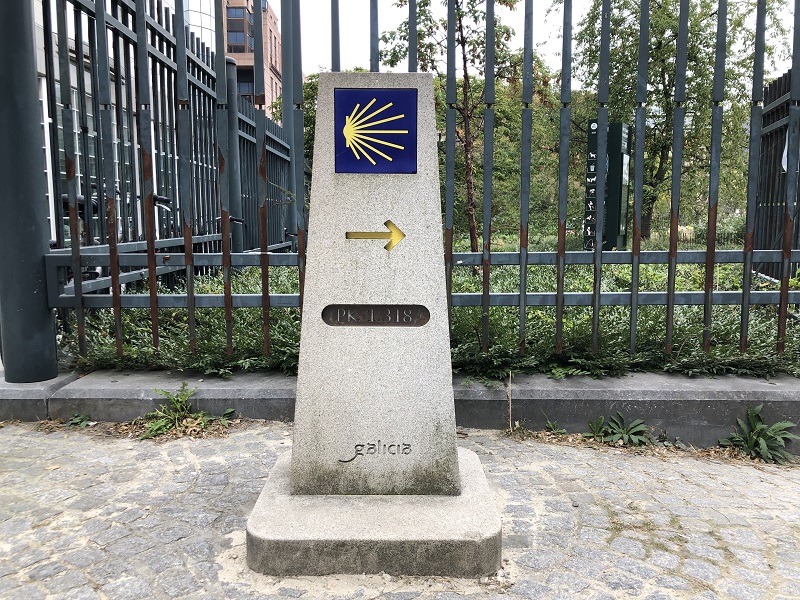
Leipzig Connection: Leipzig was mentioned at the free exhibition on the Galeries Royales Saint Hubert during June. The shopping arcade is part of a wider network of preservation for European passages, which the Mädler Passage in Leipzig is a member of.
What else is there to know about Brussels?
- Supermarkets: You’ll get an awkward amount of uneven change in supermarkets. So you’ll end up with lots of 1p and 2p coins in your wallet. Cashiers get annoyed and refuse to take these when you want to pay on the dot.
- Prices and costs vary tremendously e.g. can of ice cold coke, Brussels Central: 2.40€, Brussels Saint Gilles: 1.10€, Antwerp Central: 80p
- You often have to shop around to get the best deals. Local supermarkets, e.g. Carrefour is very expensive. Example: Febreze costs 6€ in Carrefour, but only 2.50€ at Action. Aldi/Lidl are sparse and not in every neighbourhood.
- Public Transport: Be careful when you travel on the metro. Fare evaders are common and will squeeze through the turnstile with you. Some of them can be aggressive and even push you.
- The old trams are very narrow, so be careful when entering and embarking. It is not always clear, how to open doors in the old trams. From the outside there is a green vertical strip which you have to press. It’s odd AF.
- Public WiFi: Brussels and WiFi are incompatible. All WiFi networks require a password and log in details. Usually even if you do register or have WiFi details it is still a lucky game if you can actually get on the network. In most cases you won’t. I have not been able to connect to the public City WiFi as I never receive a text code to verify. I once received the code after requesting it 5 days ago. Obvs my session was long expired by then.
- Train Travel: is moderately priced in Belgium e.g. Antwerp tickets depend on the time of travel. Weekday travel ranges between 10-16€ return, Ghent 10€ return.
- It gets costly internationally, e.g. Lille or Rotterdam even though these cities are close by and only 100km away. Tickets start at 80€ return. You can save 30% off the ticket price if you book a week in advance.
- General Things to Know about Brussels: Always look up. The real Brussels happens from the first floor upwards!
- The city tax in Brussels is 4.20€ per day but gets scrapped if you stay longer than 91 nights. This might be good to know for digital nomads and long-term travellers as the city tax would start all over again if you choose to stay at different properties during your stay.
- Language Situation: French and Flemish (Dutch variant) are the official languages in Brussels. No worries, most Brussellers speak English and will react positively if you ask them nicely to switch languages. All Belgians have been very helpful and friendly. Be aware though, this is international English, so speakers will often have strong accents, make many mental breaks (erm, you know) or may use the wrong diction.
- Belgian Chocolate Souvenirs: best to buy these in town and directly from your chosen Chocolatier. The deals at the airport aren’t as good, plus there is a completely different collection available. Some chocolatiers only have small sections available at the airport instead of their own shop.
Making of “Brussels 3 Day Itinerary”
Here are some insights into my work and research when I compiled this post:
- Spent time in Brussels and researched extensively on site
- Visited exhibitions, maisons and gathered information
- Researched, assessed and processed material
- Visited Tourist Information to compile material for my post
- Bought additional material at my own expense, such as books on coffee culture, art nouveau in Brussels and pass
- Went on day trips at my own expense to provide travel options & recommendations
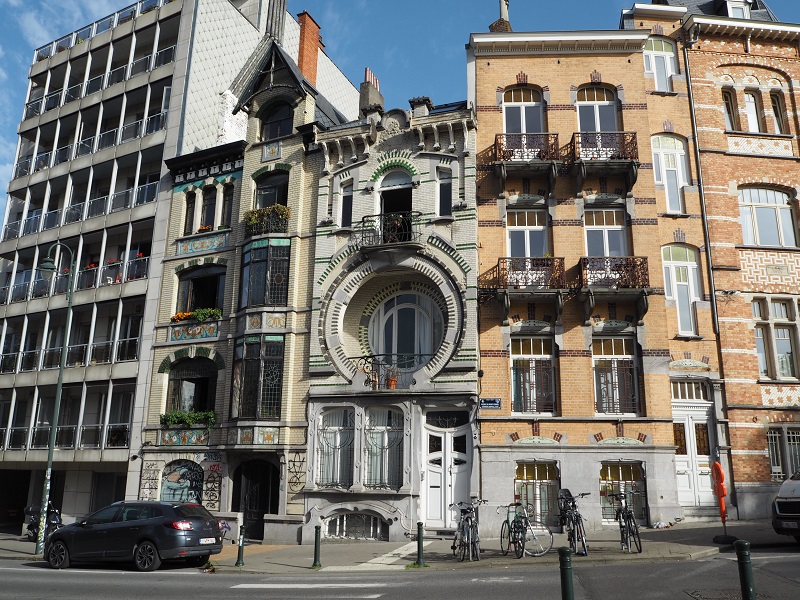
FAQs about Brussels 3 Day Itinerary
I understand this is quite a lengthy post and you may have some quick questions about my Brussels 3 Day Itinerary. You can, of course, always come back to any section of my post and read in more detail what you’d need for your trip. If you have questions or need help, please get in touch and I’m happy to assist.
How many days in Brussels?
This is an itinerary designed for 3 days in Brussels, which I feel is a good amount of time for a first visit. I have also done Brussels as a day trip from London and now moved to the city. There is still so much to explore. Again, this is heavily dependent on what piques your interest.
Is Brussels worth visiting?
Don’t expect Brussels to be overloaded with popular attractions left right and centre. If you like architecture and lifestyle, international flair and food, Brussels is for you. I’ve compiled a list with some potential pro and con considerations.
Pros:
– small, compact
– lots of lifestyle offerings
– well-connected to other cities
– characterful neighbourhoods
– character lies outside of the city centre, perfect for exploring and own adventures
– Belgian Camino
– Open vibe, feeling of familiarity and welcome
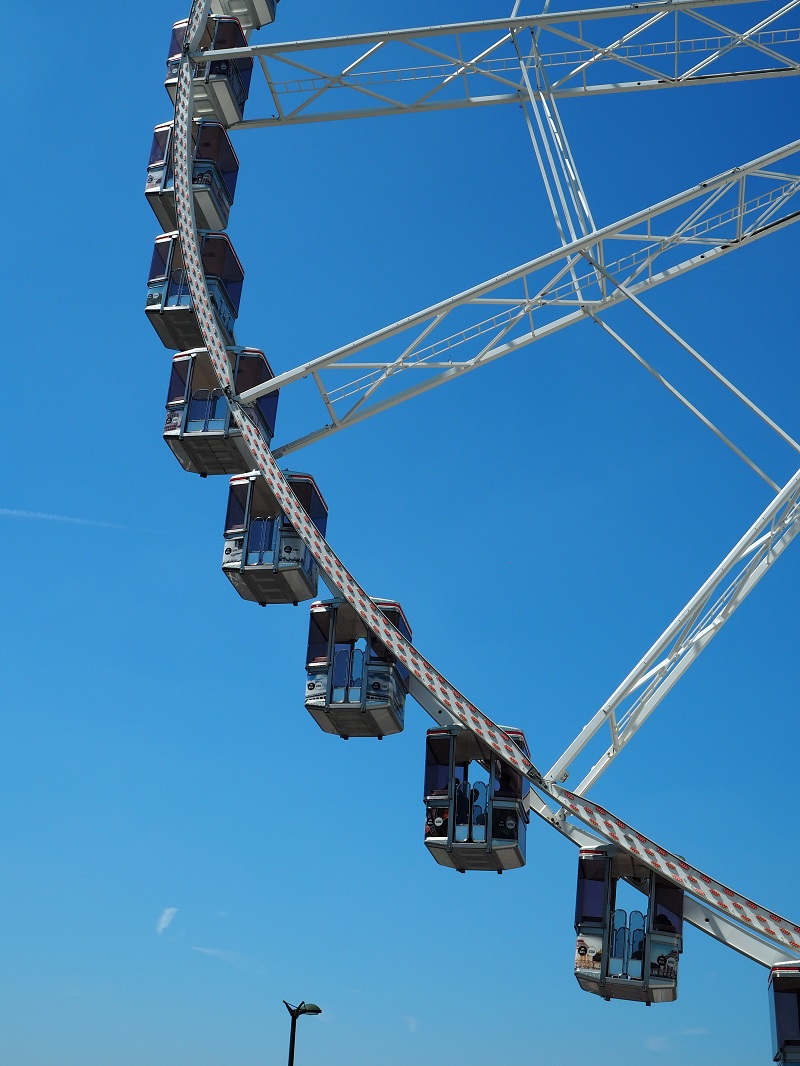
Cons:
– expensive, very outdated accommodation
– city centre and tourist areas need more upkeep, quite dirty & messy
– can feel a bit “European superiour”, remember this is a multilingual city and people have certain cultural expectations e.g. approach with French
– needs some preparations, otherwise you’ll be disappointed and struggle filling your time
Is Brussels solo travel friendly?
Brussels is very friendly towards solo travellers. I have no complaints or any negative experiences to share (yet). It is a safe city, however as all big cities, it has its dodgy areas and in parts, it’s not the best maintained city. Waste dumping makes the city look unattractive and some buildings need desperate upkeep. I tolerated it during my time living there, it is of course a different story if you only visit Brussels for 3 days.
Thanks so much for reading. If you’ve enjoyed my Brussels 3 Day Itinerary and would like to support my blog & research, you can do so via Buy Me a Coffee.
Till next time,
Carolin
You may also enjoy reading:
- Odd Quirks Of Living In Brussels You Should Know About
- Brunch in Brussels Guide: the Best and Worst Cafés
- Ultimate Travel Guide with 30 Things to do in Antwerp
- My Ultimate Eastern Europe Itinerary around the Danube Region
- Is The Eurostar London to Brussels Train Link Worth It?
- Visiting Bruges In December Is Always A Good Idea
- 3 Week Itinerary For An Epic Baltics Tour & Finland Trip
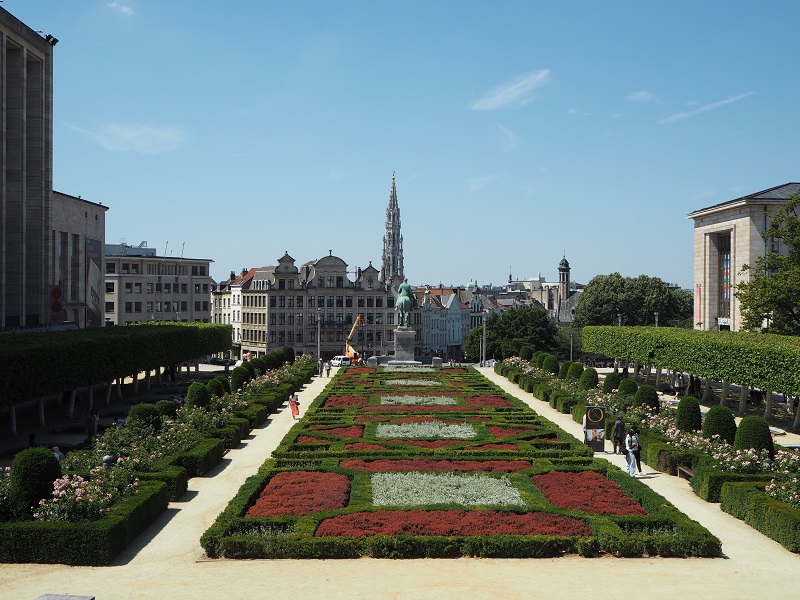

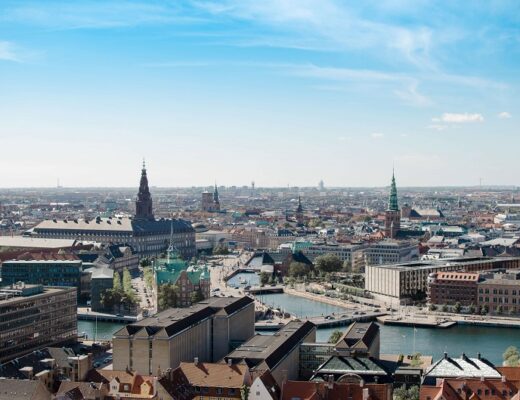
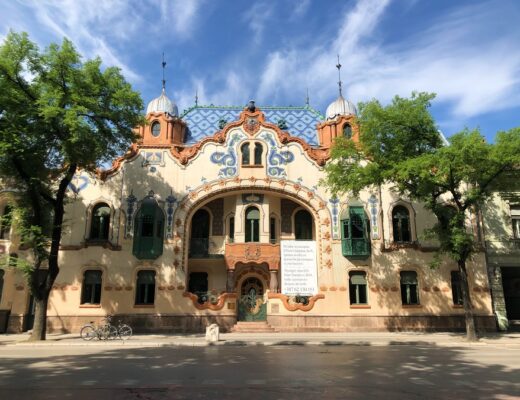
17 Comments
Jan
12 October 2023 at 3:23 pmSo much information and helpful details here Carolin. Appreciate the effort of curating this itinerary for us specially to someone like me who haven’t been to Brussels yet. I’d love to check out the Art Nouveau architecture of the city. It seems Brussels have a lot. I have always wanted to decorate our place with hints of art nouveau style and visiting the city will surely usher me some inspiration. And I think I know where the perpect place to start – the Tropismes bookshop! #flyingbaguette
Jan – https://flyingbaguette.com/
Lyn (aka Jazz)
13 October 2023 at 6:41 pmI always love a UNESCO site, Art Nouveau, bookstores, and chocolate! Definitely would want to see Palais Stocle since I am a huge fan of Klimt. It sounds like Brussels is a place for me!
The EU area sounds very interesting, disappointed to learn about the rude staff and lack of diversity in the exhibitions. I think I would still visit but I appreciate the head’s up to keep my expectations low.
As always, I appreciate your coffee culture reports.
Lyn | http://www.ramblynjazz.com
Emma
16 October 2023 at 3:21 amOne of my favourite things to do in Brussels was just walk around, admiring the gorgeous architecture and finding little hidden gems along the way. It’s nice that it doesn’t feel like it needs to be a go go go city. Great tip about getting out of the centre and visiting the food market hall. That’s something I would love to do and not something I thought of seeking out the first time I was there. Of course no trip to Brussels is complete without filling an empty suitcase with chocolate, I was spoiled for choice. You’re making me really want to go back to Brussels again soon and explore some more
Mitch
16 October 2023 at 9:30 amIt’s been over 20 years since we were last in Brussels and your detailed post has prompted us to think about returning. We visited some of the places you mention (the Atomium looks shinier than when we were there- maybe they gave it a polish!) but somehow we missed out on the fabulous Art Nouveau – we are huge fans of that movement. The staircase at Hotel Hannon is just sublime! We would definitely want to do the self-guided walk and it was a handy tip about the Art Nouveau Pass and the heritage days, definitely worth thinking about the timing on the trip. Good to know about additional day trips – we visited Bruges, but not Antwerp or Ghent – and they both sound delightful.
Barry
17 October 2023 at 3:37 amBrussels was the first foreign city I ever went to – I was 14 years old and it as much a wonderous place then as it is today.
Interesting to read about the difference between a Maison and Hotel – never knew that story.
For me, just wandering the streets and taking in all those old, quaint buildings is enough of a sightseeing tour in itself.. It has some gorious buildings and your pics bring out the majesty in many of those buildings.
Laura
17 October 2023 at 3:04 pmWOW! That is such an incredibly detailed post! I have never been to Brussels but this post seems to emphasize all the important places and a few to avoid. I like the length and detail as it gives a true flavour of the city. Now I want to go there! Thanks.
Sarah's Sojourns
17 October 2023 at 3:51 pmGreat article, except it’s convinced me I need way more than 3 days to see Brussels! I definitely want to get out and do some day trips.
Last time I was there I really enjoyed just wandering around and eating lots of delicious food so missed a lot of the things you mention!
James Fahey
19 October 2023 at 10:07 amI am a little ignorant when it comes to Brussels but great to see it’s worth a few days in the capital of the EU. Grote Markt looks epic. I would love to see the Art Nouveau architecture having been impressed when in Riga so that would be on my itinerary for sure. I enjoy visiting small and compact cities which means getting around is easier and you don’t waste time so it’s ticking all the boxes for me! I would also enjoy going around the EU quarter to see if I can spot any notable people in power.
Angela
19 October 2023 at 11:39 amI confess that I never put Brussels on my list of cities to visit because I didn’t realize how interesting it would be.
The architecture of the central area is beautiful. I’m fascinated by Art Nouveau, so I’m sure I’d be delighted with the city. And for book lovers, the Tropismes bookshop is spectacular.
I had no idea that the Way of St. James passed through Brussels 🙂
Once again, it’s a very comprehensive article full of fabulous tips for those who want to visit the city!
Tiffany Pence
19 October 2023 at 9:00 pmI always thought Brussels was a modern city, but happy to learn about all the Art Nouveau architecture! I was considering Brussels for its Christmas market, chocolate, and waffles, but now I know there’s more to this exciting city!
Carole
25 October 2023 at 12:35 amWhat a great guide! I used to go to Brussels for work occasionally (pre Brexit) but didn’t see half of the goodies mentioned here. I did love the art nouveau, the mussels and the fries as well as the chocolate! And once I got the hang of the underground I found it an easy city to get around. Now I need to go back and fill in all the gaps in my itinerary.
Pam
27 October 2023 at 11:45 pmMy sister in law is doing a long layover in Brussels for our trip in January (I didn’t have the time off), so I’m sending this to her so she knows what to do with a short time frame in the city. I love that you also included places to avoid – so true that not everywhere is worth it!
Tania Peru
21 December 2023 at 9:53 pmBrussels looks like a very beautiful place with many places to visit, really thank you for taking the time to leave every detail written in this blog and for the recommendations I must definitely put it on my next vacation, I am from Cusco Peru and also love a solo traveler, I invite you to also visit my country, we have many places to visit. 🙂
Yasser Moosa
31 January 2024 at 11:38 amWhat a delightful journey through Brussels! Your 3-day itinerary is a treasure trove of must-visit spots, blending history, culture, and those irresistible waffle stops. I can almost taste the chocolate through your vivid descriptions. Thanks for sharing your solo adventure; it’s like I strolled through the Grand Place myself! Can’t wait to read more tales from your solo travel escapades. Safe and happy travels!
Chloe
14 May 2024 at 10:15 amThanks for sharing such a detailed itinerary. It’s great that you’ve added pros and cons.
Chloe | The Coconut Atlas
Steph
14 May 2024 at 3:41 pmThis is an excellent itinerary for Brussels. I love the city so much and I could meander around looking at the beautiful art nouveau for days! Thanks for all this insight into such an amazing city. I’ll definitely bookmark this for my next visit to Belgium.
Riana Ang-Canning
14 May 2024 at 5:13 pmI really enjoyed our visit to Brussels back in 2023 – it’s a surprisingly cool city! Though I missed out on lots of the beautiful art nouveau architecture and coffee culture that you found. Looking forward to exploring more next time!